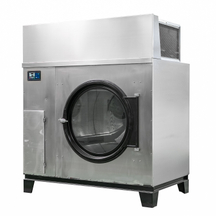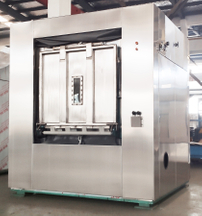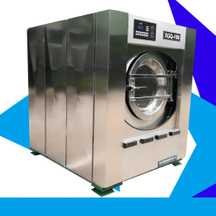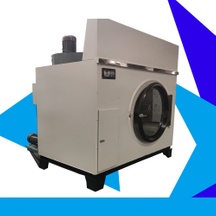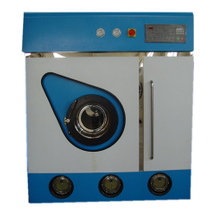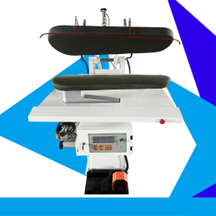In modern production environments, pharmaceutical and electronics factories impose extremely stringent requirements on cleanliness and hygiene standards during manufacturing processes. Any minor contamination could severely compromise drug quality or electronic product performance. As equipment that effectively prevents cross-contamination while ensuring high cleanliness of washed items, barrier washing machines play a critical role in these two industries.
I. Working Principle and Technical Features
The core design philosophy of barrier washing machines partitions the laundry facility into two isolated operational zones: a clean area and a contaminated area. Utilizing a back-to-back dual-door configuration, textiles are loaded through the contaminated-side door. After completing the wash cycle, processed items are unloaded exclusively from the clean-side door. This architecture fundamentally eliminates secondary contamination and cross-contamination risks caused by exposure to non-controlled environments during loading/unloading operations.
At the technical level, barrier washing machines incorporate multiple advanced features. Most units are equipped with computerized controllers featuring large LCD touchscreens that support bilingual (Chinese/English) human-machine interfaces. This enables intuitive operation with high reliability. For vibration control, specialized high-strength structures combined with spring or airbag shock absorbers minimize operational oscillations to amplitudes below 0.5 mm. This ensures equipment stability while eliminating environmental disturbances. The inner door locking mechanism employs a slider-type system with self-locking anti-loosening functionality, providing robust security and structural integrity. Additionally, select models feature automated door alignment systems utilizing proximity sensors for precise positioning (±1 mm accuracy) during loading and unloading operations.
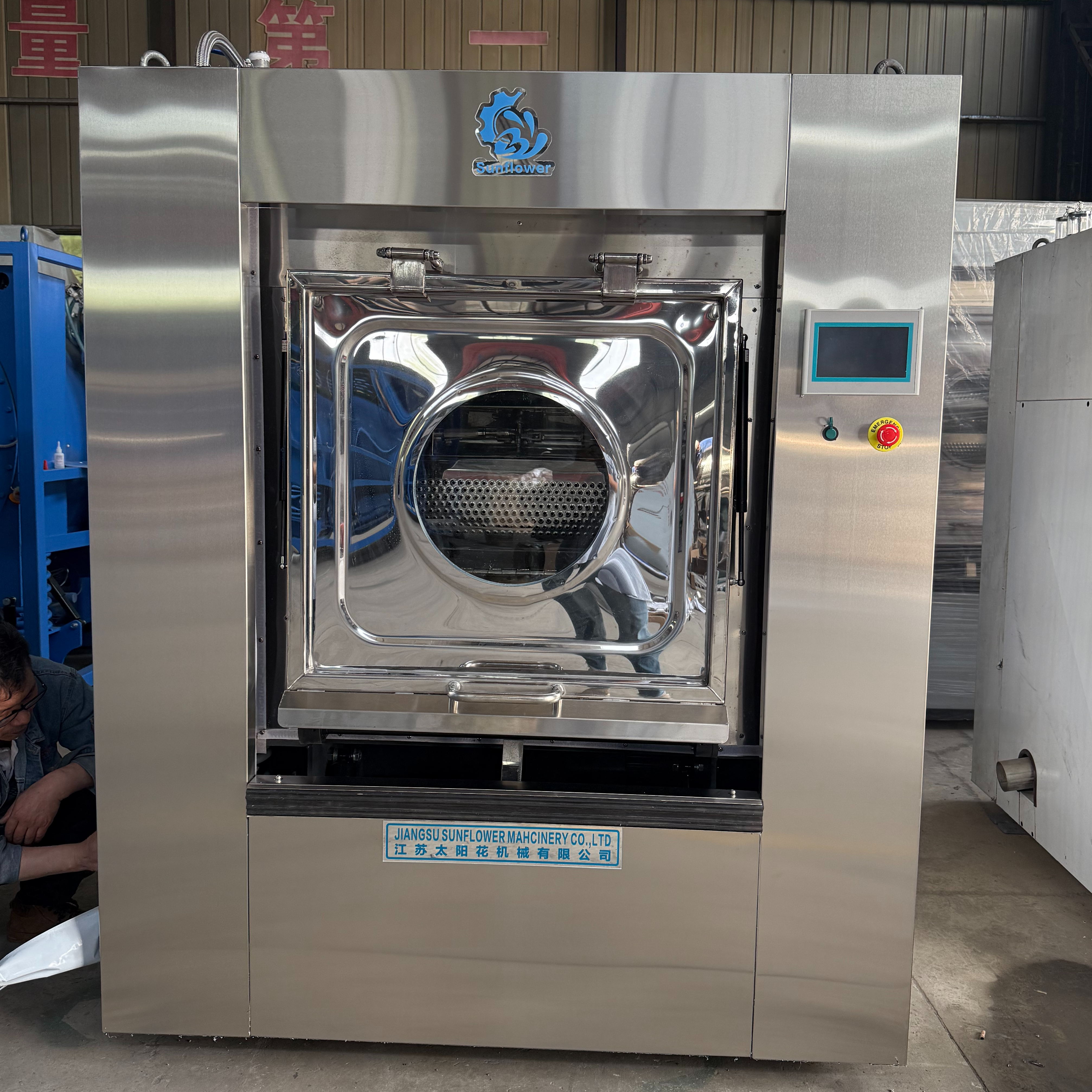
II. Application of Barrier Washing Machines in Pharmaceutical Facilities
1. Compliance with Stringent GMP Requirements
The pharmaceutical industry adheres to rigorous Good Manufacturing Practice (GMP) regulations, imposing near-zero tolerance for contamination in production environments and related articles. Cleanroom garments, shoes, and other textiles worn by personnel directly contact drug products, making their cleanliness critical to final product quality. Barrier washing machines are engineered to meet Grade D (ISO Class 8) or higher cleanroom specifications, fulfilling pharmaceutical manufacturers' needs for high-cleanliness textile processing and dewatering. By partitioning laundry facilities into controlled (non-clean) and critical (clean) zones—where operators load/wash in controlled zones and unload/inspect/fold in critical zones—these systems prevent cross-contamination of cleanroom environments. This ensures full compliance with pharmaceutical production standards.
2. Ensuring Aseptic and Particulate-Free Production Environments
Pharmaceutical manufacturing processes demand absolute exclusion of microbial and particulate contamination. Barrier washing machines feature fully enclosed construction with all product-contact surfaces—including loading baskets, water tanks, inlet valves, steam valves, drain valves, and exterior panels—fabricated from 304 or superior 316L stainless steel. All welds employ argon arc techniques to achieve exceptional acid/alkali resistance and corrosion prevention, eliminating equipment-generated contamination. During operation, optimized wash cycles incorporating validated disinfectants (e.g., peracetic acid, hydrogen peroxide) completely eliminate microorganisms and particles from textiles. This delivers sterile, particle-free work garments that maintain integrity throughout Grade A/B aseptic processing environments, thereby safeguarding drug product quality at the source.
3. High Integration of Disinfection and Washing Functions
Many barrier washers feature robust disinfection capabilities, which are crucial for pharmaceutical plants. For instance, some equipment can be optionally equipped with ozone disinfection devices. Ozone, with its strong oxidizing properties, can effectively eliminate various bacteria and viruses, ensuring the required cleanliness standards of cleanroom garments. Simultaneously, the washing programs are meticulously designed to be adjustable based on different fabric types and contamination levels, achieving highly efficient cleaning results. During the washing process, precise control over parameters such as water temperature, washing duration, and detergent dosage ensures garments are thoroughly cleaned without sustaining damage. This prolongs the service life of the garments and reduces operational costs for enterprises.
III. Application of Barrier Washers in Electronics Factories
1. Preventing Particulate Contamination of Electronic Products
Electronic products manufactured in factories, such as semiconductors, integrated circuits, and optoelectronic components, are highly sensitive to particulate contamination in the production environment. Even microscopic dust particles can cause malfunctions like short circuits or open circuits, compromising product performance and quality. Cleanroom garments and anti-static clothing worn by employees in electronics factories tend to accumulate substantial particles during daily operations, thus requiring regular and highly efficient cleaning. Barrier washers effectively prevent recontamination of cleaned garments by separating the washing process into clean and non-clean zones, ensuring the high cleanliness level of cleanroom garments. Additionally, the inner drum of the equipment typically undergoes dual treatments of grinding and electropolishing, resulting in a smooth surface that prevents snagging or abrasion of fabrics. This avoids damage to garments and eliminates potential sources of new particulate contamination.
2. Adapting to the Special Environmental Requirements of Electronics Production Workshops
Electronics production workshops typically demand strict environmental conditions such as anti-static measures, constant temperature, and constant humidity. Barrier washers are designed and manufactured with full consideration of these special requirements. The motor heat dissipation vents of the equipment are equipped with medium-high efficiency air filters, ensuring that the air exhausted into the room during operation complies with cleanliness level requirements and does not impact the workshop's air quality. Furthermore, the equipment incorporates an effective damping structure, maintaining operating noise at low levels to avoid potential interference with sensitive electronic production processes. Simultaneously, the equipment's materials and seals are specially selected for their excellent chemical stability, enabling adaptation to chemical environments that may exist within electronics production workshops. This ensures the equipment's long-term stable operation.
3. Seamless Integration with Electronics Factory Production Processes
Electronics factories typically feature highly automated and refined production processes. Barrier washers can be seamlessly integrated into the overall production workflow, enabling automation and information-based management of the washing procedures. Some advanced barrier washers are equipped with Grade PLC controller systems. These systems not only interface with the factory's centralized control information network platform, enabling real-time data collection, traceability, and printing of washing parameters, but also offer functionalities such as A0 value monitoring and computerized operation curve display. Additionally, optional features like online pH value detection and gradient cooling can be configured to meet the electronics industry's higher demands for refined management of the washing process. Through these capabilities, electronics factories can implement stringent monitoring and management of the washing stage, ensuring every cleaned garment meets production requirements. This guarantees the smooth operation of the entire production process.
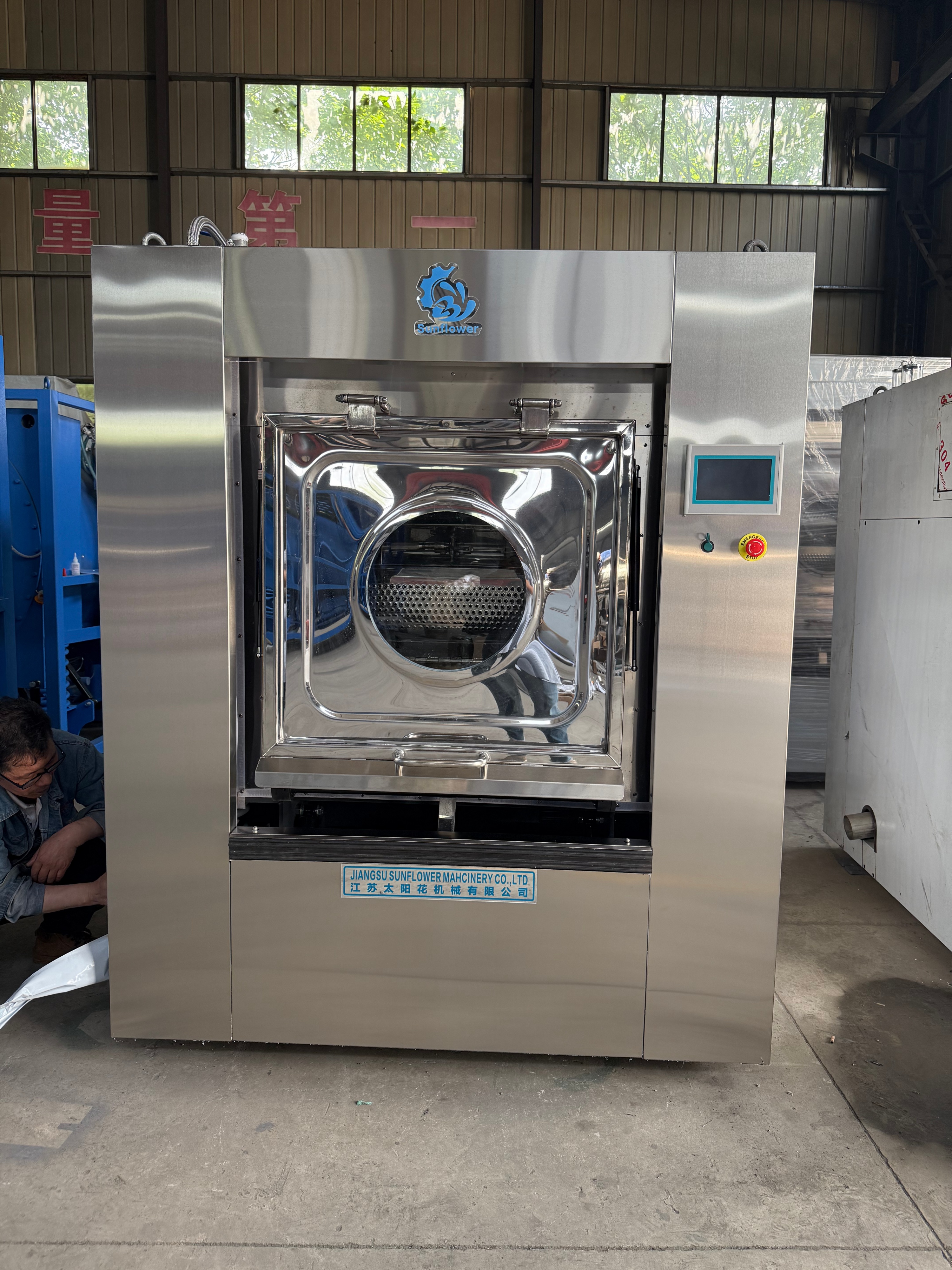
IV. Case Studies on Barrier Washer Applications
1. Application Practice in a Large Pharmaceutical Enterprise
A renowned large pharmaceutical enterprise introduced barrier washers across multiple production facilities. Prior to implementation, the company used traditional washing equipment. Although certain cleaning measures were implemented, it remained challenging to completely avoid cross-contamination issues, resulting in repeated concerns during GMP inspections.After adopting barrier washers, the enterprise redesigned its laundry room layout according to equipment requirements, strictly demarcating clean and non-clean zones. Following sustained operation, significant results were achieved: the enterprise's drug product stability was greatly improved, with quality defects caused by garment contamination reduced to near-zero levels. Moreover, the high automation level and user-friendly operation significantly increased washing efficiency while reducing labor costs. In subsequent GMP inspections, the laundry management system was highly recognized, providing a robust safeguard for the company's ongoing compliant production.
2. Selection by a Leading Electronics Manufacturer
A top-tier electronics manufacturer specializing in high-end semiconductor chip production operates ultra-clean workshops requiring exceptionally stringent cleanliness standards. After rigorous market evaluation and product testing, the enterprise selected an advanced-function barrier washer. This equipment not only provides standard isolated washing capabilities but also integrates high-precision air filtration systems and intelligent wash program controls. In practical application, the system effectively eliminated particulate contamination caused by improper cleaning of employee work garments, significantly reducing product defect rates. Furthermore, through integration with the company's manufacturing execution system (MES), it enables real-time monitoring and analysis of washing data, delivering robust data support for production process optimization. Company executives confirmed that the barrier washer implementation plays a critical role in maintaining product quality superiority and enhancing production efficiency.
V. Future Development Trends of Barrier Washers
1. Enhanced Intelligence and Automation
With continuous technological advancements, future barrier washers will evolve toward greater intelligence and automation. Equipment will incorporate advanced sensors and intelligent control systems capable of automatically adjusting washing programs based on fabric type, load weight, and contamination levels to achieve precision cleaning. Simultaneously, heightened automation will minimize manual intervention, reducing potential human errors. For instance, automated loading/unloading systems will become standard configurations, utilizing robotic arms or conveyance mechanisms to handle garments autonomously. This not only boosts operational efficiency but also better ensures contamination-free processing throughout the washing cycle.
2. Higher Energy Efficiency and Environmental Standards
Amid global emphasis on energy conservation and environmental protection, barrier washers will continually enhance their eco-performance. On one hand, equipment will adopt more efficient motors and energy-saving heating/cooling systems to reduce power consumption. For instance, utilizing advanced frequency conversion technology enables real-time adjustment of motor power according to operational status, minimizing unnecessary energy waste. On the other hand, sophisticated water recycling systems will be developed to enable multiple reuse cycles of wash water, significantly decreasing water consumption. Furthermore, optimized structural designs and manufacturing processes will improve thermal insulation properties, reducing heat dissipation and thereby boosting overall energy utilization efficiency.
3. Deep Integration with the Industrial Internet
The evolution of the Industrial Internet presents new opportunities for barrier washer development. Future systems will be deeply integrated into Industrial Internet frameworks, achieving interconnectivity between equipment and enterprise management systems through IoT technology. Operational data will be transmitted to cloud platforms in real-time, enabling managers to monitor equipment status, washing parameters, and perform remote administration via mobile or computer terminals anytime, anywhere. Concurrently, big data analytics and AI technologies will enable deep mining of operational data to predict equipment failures, facilitate preemptive maintenance, enhance reliability and service life, thereby delivering more efficient and intelligent support for production operations.
Barrier washers, with their unique designs and advanced technologies, play an irreplaceable role in industries demanding extreme environmental cleanliness such as pharmaceuticals and electronics. As industry requirements escalate and technology advances, these systems will continuously innovate to provide stronger safeguards for high-quality development in these sectors. Whether meeting current stringent production standards or adapting to future trends, barrier washers will maintain critical importance in both industries, propelling continuous advancement and growth.












